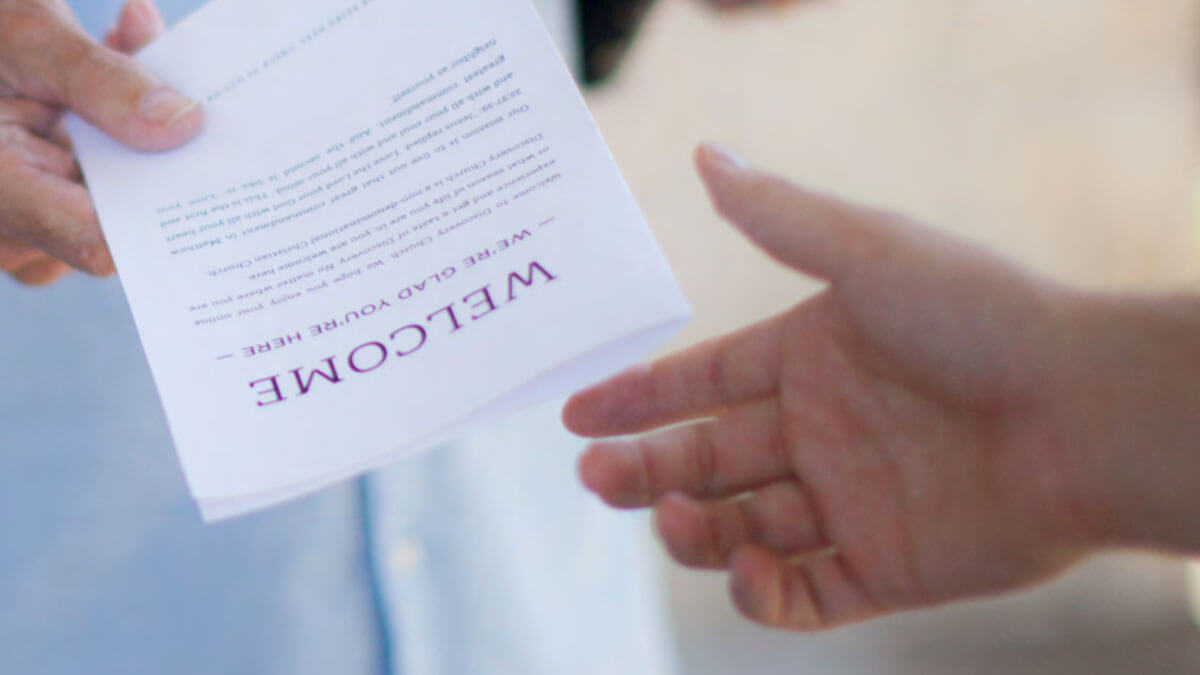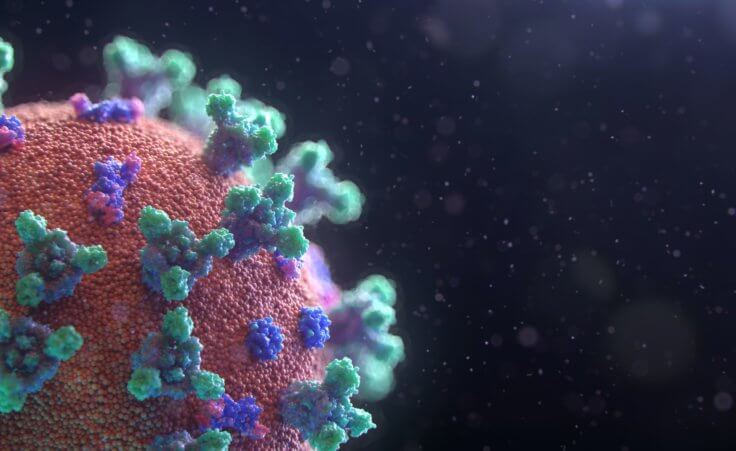
Adobe Stock
“Whatever tomorrow will bring, God knows. And we have the assurance that Jesus’ presence, provision, and power will be real to each one of us, and it will be as miraculous as the stories we read in the Gospel.” —Br. Curtis Almquist, Society of St. John the Evangelist
Texas Gov. Greg Abbott announced this afternoon that he is issuing updated guidelines for reopening the state economy during the coronavirus pandemic. It includes specific health protocols for churches that you can access here.
As your church considers the question of reopening services and events, the following resources may be helpful.
A survey of approaches
Approaches to reopening church services and events are dynamic and disparate across the country:
Georgia’s governor announced that churches in his state could reopen their doors for in-person services if “done in accordance with strict social distancing protocols.”
An agreement between the Kansas governor and churches in the state allows congregations to continue in-person services so long as they practice safe distancing. The governor is finalizing plans for her less restrictive statewide reopening orders that would take effect on May 4.
A large number of faith leaders in Dallas cosigned a letter to Gov. Abbott supporting the continued closure of their buildings and suspension of their services for the greater good. In addition, First Baptist Dallas Senior Pastor Robert Jeffress said, “We probably wouldn’t even open up in phase 1 or phase 2. It probably doesn’t make any sense for us to open up with ten or even one hundred. But it all depends on the numbers. The number of cases need to go down.”
Top officials of seven black Christian denominations recently joined civil rights leaders in calling for people to stay home until it is safe in states where governors are lifting stay-at-home orders. They are encouraging “all Black churches and businesses to remain closed during this critical period.”
On the other hand, the conservative law firm Liberty Counsel launched a “ReOpen Church Sunday” initiative this week, calling on churches to begin gathering in person again this Sunday. They are recommending a phased approach that allows some worshipers to gather in person while maintaining social distancing, while others participate in their cars, or, if they belong to an at-risk population, at home via livestreaming. The campaign’s website also lists suggested safety measures such as sanitizing worship spaces and checking temperatures at the door.
Four medical responses
There are at least four medical responses to the question of reopening the economy and our churches. We can view them on a spectrum from the longest time frame to the shortest.
One: Wait until we can guarantee every person’s safety.
This outcome requires a vaccine that is completely effective in preventing SARS-CoV-2 infections even if the virus mutates and/or we achieve society-wide acquired immunity to the virus.
Oxford University is working with vaccine maker Serum Institute of India to start production of a new vaccine in the next two to three weeks. If human clinical trials are successful, the vaccine could be brought to market by October.
Other scientists think it will take twelve to eighteen months for an effective vaccine to be developed. And some scientists fear that an effective vaccine for COVID-19 may be impossible to produce. They fear that it will be impossible to stimulate immunity to the virus and note that some people seem to have been reinfected after a previous infection.
The bottom line: we have no idea if/when it will be completely safe to reopen the economy and our churches without fear of COVID-19.
From a medical perspective, waiting until it is completely safe to reopen the economy brings other significant health risks as well:
- We are seeing escalating rates of depression, anxiety, and other mental health disorders.
- Medical officials are very concerned about the underreporting of other health issues, such as heart attacks and strokes, as patients are either afraid they will not receive treatment or that they may become infected.
- Family abuse issues are rising as a tragic consequence of stay-at-home restrictions.
Not to mention the health consequences of severe economic impacts. As people lose their jobs, their ability to provide health care for themselves and their families is impacted. Insurance coverage and support may be affected as well.
Two: Reopen as therapies are developed that mitigate the risks of contracting the virus.
Pharmaceutical companies are hard at work developing therapeutic responses to the virus. These are not vaccines that would prevent infection, but rather are medical responses intended to lessen its severity. For example, an Israeli therapy shows early signs of countering acute respiratory distress syndrome, one of the leading causes of mortality for COVID-19 patients.
Some approaches repurpose existing therapies, which makes them available without the testing necessary for new drugs. The hope is that SARS-CoV-2 infections could be treated in such a way that the virus’ mortality rate is lowered significantly and its other side effects are mitigated effectively. Prophylactic treatments could also be developed to lessen the severity of the virus to those exposed to it.
We are aware of the seasonal flu each year. We know that some will become infected and some will even die, yet this possibility does not keep us sheltered in place. If therapies for COVID-19 could similarly lower its risk, we could reopen the economy and our churches more safely.
Three: Reopen as testing improves.
Testing is vital on four levels:
- We need to identify those who have not been infected and have risk factors (such as heart disease, high blood pressure, obesity, or advanced age) so they can be insulated.
- We need to identify others who have not been infected so they can be protected.
- We need to find those who have been infected and recovered so that (on the assumption that they have acquired some level of immunity) they can return to work with less fear of future infection.
- We need to identify those who are currently infected so they can be isolated and treated as effectively as possible.
If an entire community could be tested in these ways, we could theoretically reopen our economy and churches to those in the third category with less risk to the others.
At the very least, we could insulate those who are most at risk while ensuring that our healthcare system is not overwhelmed with others who become infected.
Four: Reopen the economy completely.
This approach could be considered if it could be demonstrated that we have achieved enough “herd immunity,” testing, and hospital capacity to prevent a major spike in infections while mitigating the symptoms of those that occur. It could also be considered if the virus proves to respond to summer temperatures and humidity as does the seasonal flu.
At present, we have no proof that such immunity exists, much less that it has been achieved in a particular community. Nor do we have therapies that ensure an effective response that mitigates symptoms.
Church priorities
Consider these priorities as churches decide whether to reopen services where permitted by authorities:
- Identify and protect those at highest risk of infection. Such individuals should probably be asked to worship from home online.
- Limit in-person attendance as requested by authorities. Congregations could rotate attendance by birthdays or other means while providing online resources for all others.
- Hold services outside. The virus does not seem to spread as easily outdoors; it is much easier to maintain safe distancing in outdoor space.
- Enact mitigation policies to provide safe spaces for those who attend. Families who are sheltering together at home could obviously worship together while staying at least six feet away from all others. Those attending could be tested with regard to temperature and/or coronavirus symptoms. All rooms and surfaces should be sanitized before and after events. Attendees could be encouraged to wear face masks (to lessen the likelihood that they could infect others) and gloves.
I highly recommend this manual developed by Wheaton College for churches as they prepare their responses.
Conclusion
Gov. Abbott recently said, “God never promised us a life free of storms. What God promised was a pathway through those storms. That’s what I’ve seen in my own life and that’s what I’m seeing in Texas.”
I am convinced that God redeems all he allows. One way he is redeeming this pandemic is by using it to enable us to reach people we were not reaching before. Churches and ministries are seeing remarkable responses to online worship services and other resources. Secular people are becoming more aware of their spiritual needs and turning to the gospel.
Paul testified: “I am not ashamed of the gospel, for it is the power of God for salvation to everyone who believes” (Romans 1:16). We know that the deadliest virus of all is spiritual and that the only antidote is faith in Christ.
It is a privilege to offer his help and hope to our culture with you.
Further resources from Denison Forum
“Is Online Church Really Church? A Theology of Technology and Presence” by Jim Denison (website article for our resource ministry to pastors, A Pastor’s View).
“Life After the Pandemic: What May Happen and How to Prepare Biblically” by Jim Denison (website article for our cultural engagement ministry, Denison Forum).
Biblical Insight to Tough Questions: Coronavirus Special Edition, a complimentary e-book by Jim Denison.
Making Sense of Suffering, a book by Jim Denison and Ryan Denison.









